Gigabyte X399 Aorus Xtreme Review: Overclocking Without Compromise
Why you can trust Tom's Hardware
Benchmark, Power and Thermal Results
1950X: Synthetics, Applications, and Games





PCMark has its own issues with large core count processors that are remedied with PCMark 10. But for our purposes, the Gigabyte X399 Aorus Xtreme performs admirably with the Office workload, but struggles when compared to the X399M Taichi and Aorus Gaming 7 in the remaining workloads. The pure synthetic Sandra suite, however, begins to favor the flagship boards from both vendors, with minor wins across the suite until we get to the Memory Bandwidth test. This could be an indicator that these boards are routed with a bit more care regarding signal integrity, with nearly 4 percent higher scores when compared to the X399M and Gaming 7.



Our storage benchmark is a mixed bag of results across the vendors. But for the averages, the X399 Aorus Xtreme manages to place 2nd with a solid performance in random reads and writes. Everyone’s favorite benchmark, Cinebench R15, has become the de facto standard in terms of multi-core performance in the industry. And it’s a shame to see the Aorus Xtreme place “so poorly” against the competition. However, the spread is small and subsequent executions would likely move any of these boards up or down the result sheet. Regardless of synthetic render performance, CompuBench results for the X399 Aorus Xtreme are very positive, with nearly a two-percentage-point lead over the second-place board when all scores are averaged.

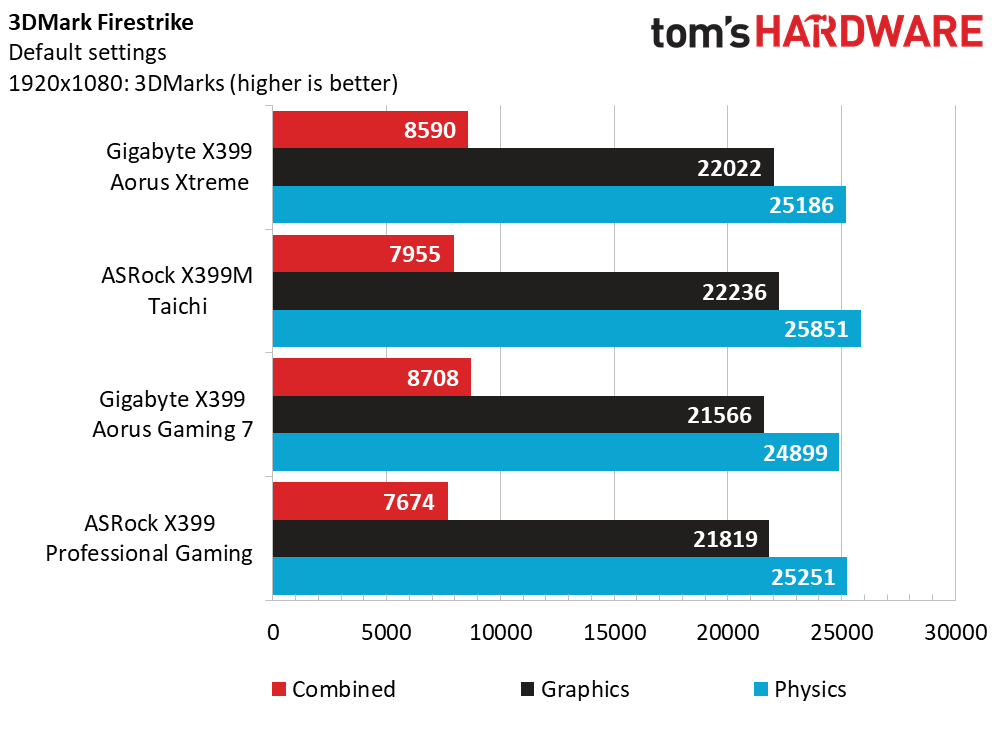

As our testbench evolves, Time Spy and Time Spy Extreme will better exercise a system like ours. But for our purposes today, Skydiver and Firestrikes will have to do. Skydiver’s 720p resolution is likely too-low of a load to justify on our system, and the Aorus Xtreme struggles to keep up in the Combined and Graphics workloads. However, Firestrike and Firestrike Extreme look better for the Xtreme, with only negligible losses but measurable leads in Combined Firestrike performance.




On the application front, results are as expected in the Handbrake, Blender and Lame64 workloads, which AMD touts as Threadripper’s strong suits. Adobe performs well on this instance of our test bench with the X399 Aorus Xtreme coming out roughly 1.5 percentage points ahead of the X399M Taichi. Lastly, 7-Zip also shows strong performance with the Aorus Xtreme. However, the gap is less than one percent between first and last place.

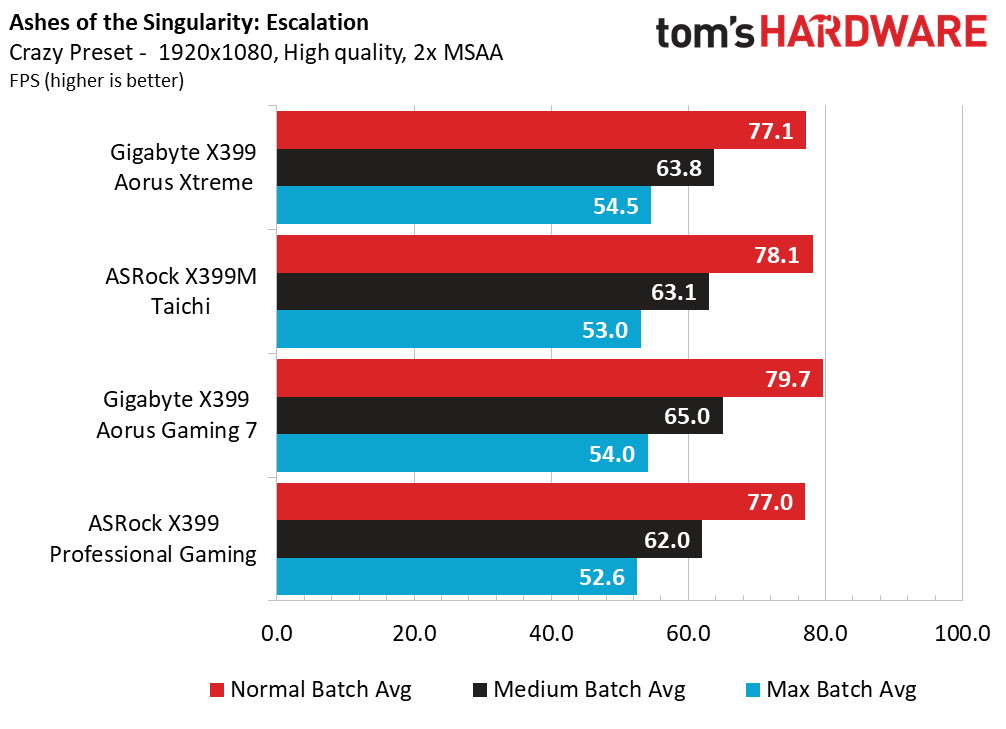
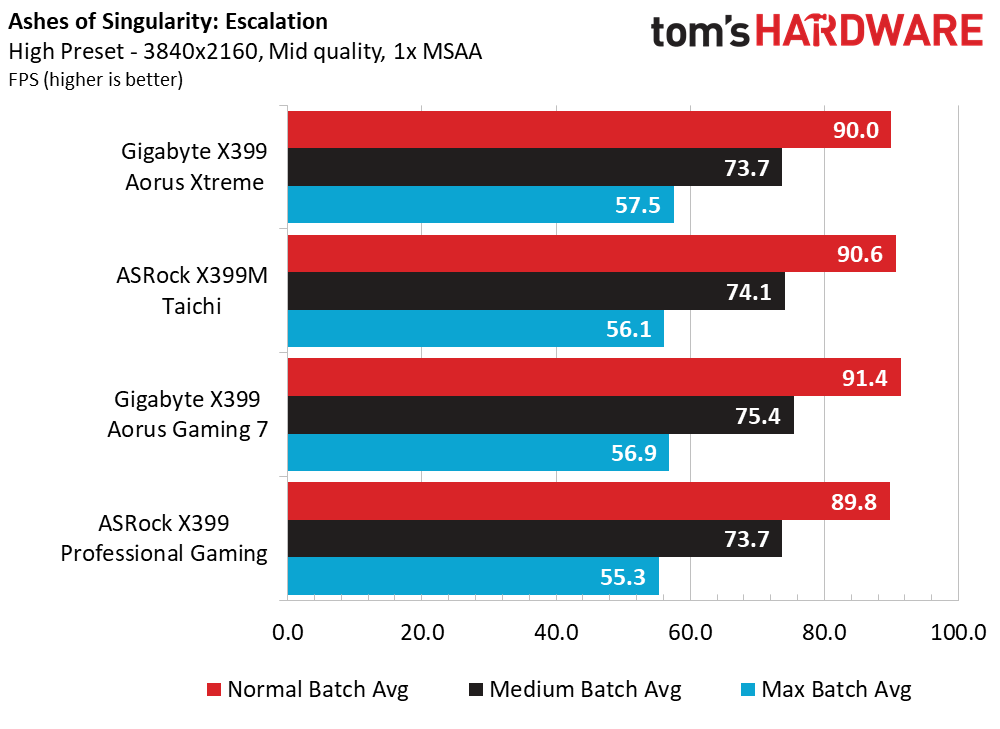

Without repeating ourselves about X399’s gaming pedigree, let’s just get the games out there. Ashes of the Singularity at 1080p and 4k perform well with the Gigabyte X399 Aorus Xtreme, placing middle of the pack in all resolutions and details.


F1 2015 is limited by the number of cores/threads that can be used. So by deploying only 28 cores in Creator Mode through Ryzen Master and F1’s XML interface the Aorus Xtreme slips to the bottom half of performers as compared with this sample set. There are notable wins for the Gigabyte X399 Aorus Gaming 7 and the ASRock X399M Taichi in this workload.
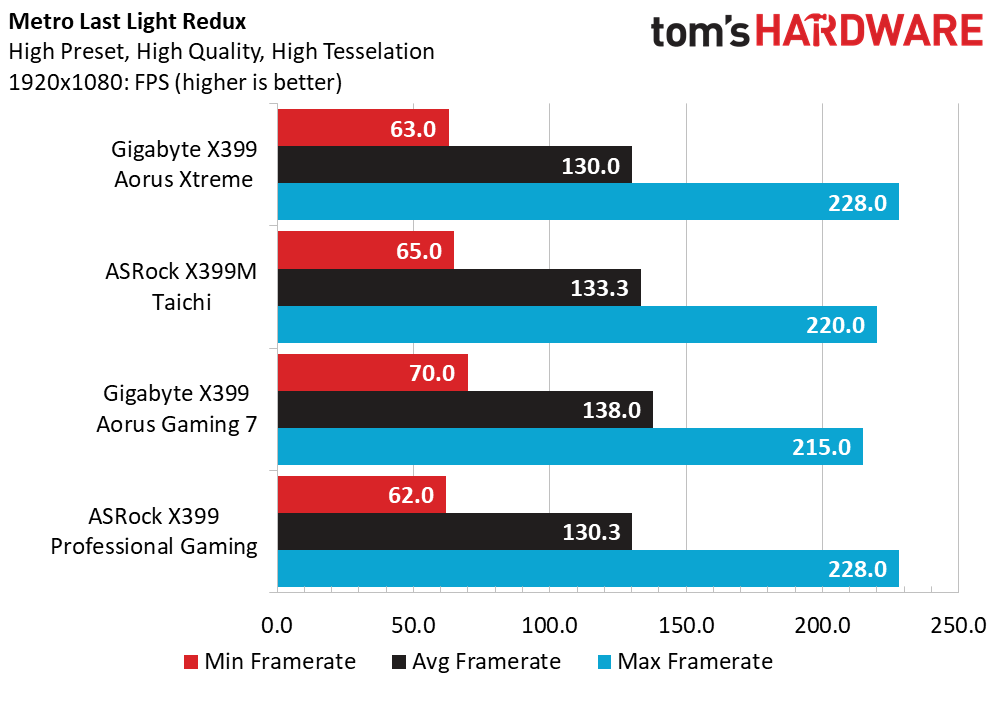


Metro Last Light continues to be a good general metric for gaming, and the 1950X Threadripper-equipped X399 systems show a tight range of average framerates at both 1080p and 4k. And unfortunately, both top-shelf motherboards today lag the higher-value boards by nearly six percentage points at both resolutions and detail settings.
Get Tom's Hardware's best news and in-depth reviews, straight to your inbox.




While we've seen strange results from The Talos Principle in the past, this time around the title provided expected results similar to our Metro workload. In other words, on this test the flagship boards struggle, lagging behind by up to 10 frames per second (fps) at 1080p and the High preset, and that trend continues at Ultra and 4K settings.
2990WX: Synthetics, Applications, and Games
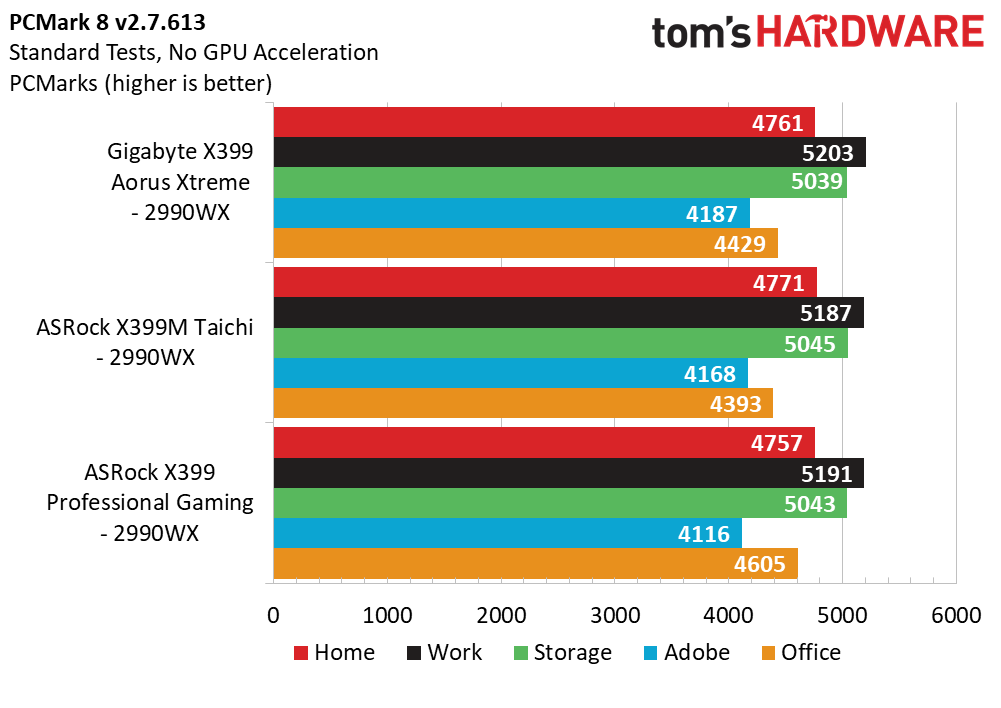




Again, we’re limited in hardware that that we've tested with the 2990WX, so we’ll only be looking at the Gigabyte X399 Aorus Xtreme, ASRock X399M Taichi, and ASRock X399 Professional Gaming boards today. For synthetics, these 32-cores chew through Sandra as expected, with the Aorus Xtreme coming out ahead in the Arithmetic but falling behind in Multimedia, Crypto, and Memory Bandwidth tests by less than one percentage point.


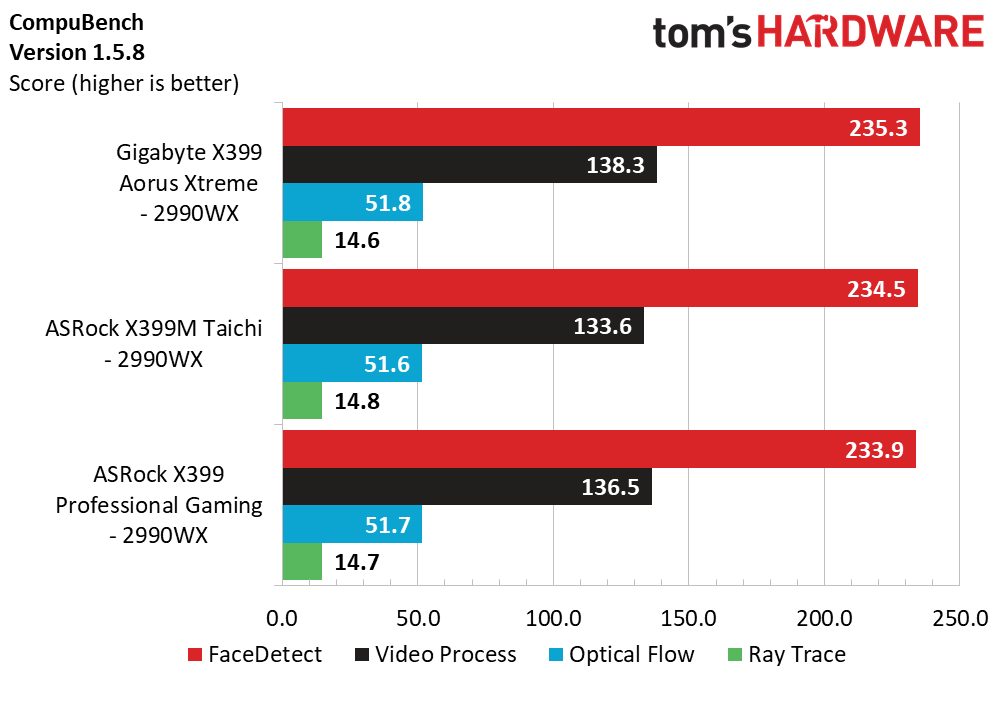
IOmeter again shows each board excelling in different metrics of this test, and the Aorus Xtreme places well with all except the 4K Random Read performance sub-test. As we saw with the 1950X data, results scale very well in Cinebench with the 32 cores, but the Gigabyte X399 Aorus Xtreme does slip by a half a percentage point when compared to the X399M Taichi. And in a similar vein as the 1950X data, CompuBench performs well with the Xtreme motherboard and this 2990WX processor.

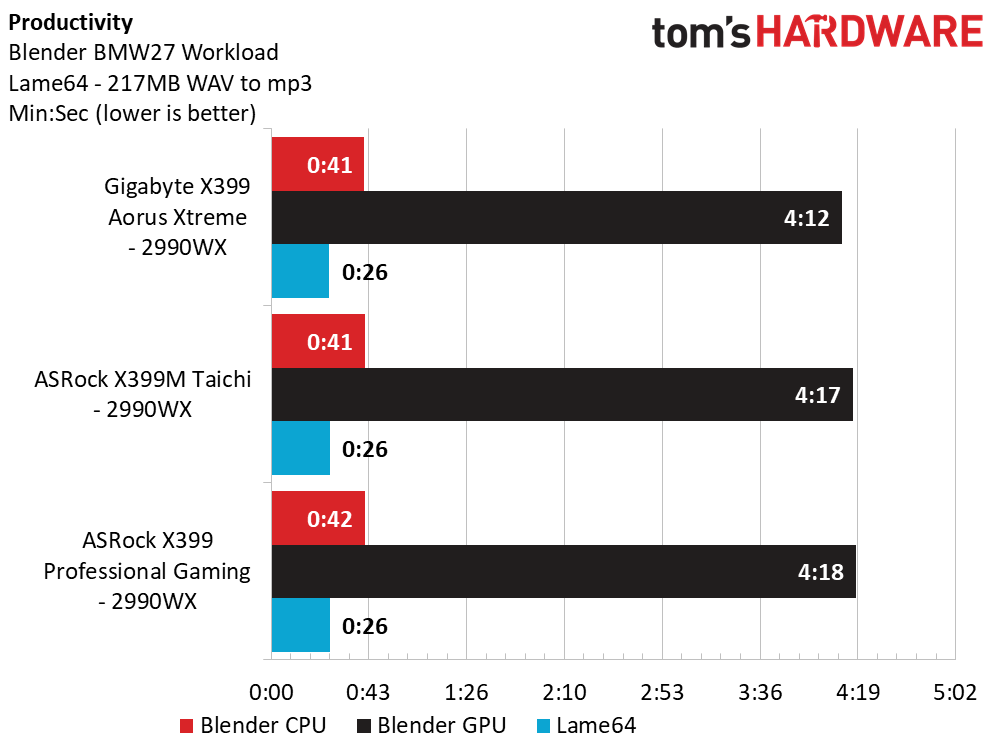


When combining the Gigabyte X399 Aorus Xtreme with the 64-thread processor, Handbrake pulls a 1-minute lead compared to the X399 Professional Gaming, but other workloads show smaller leads and losses for the Gigabyte board. Still, the spreads are all within two percentage points of one another.

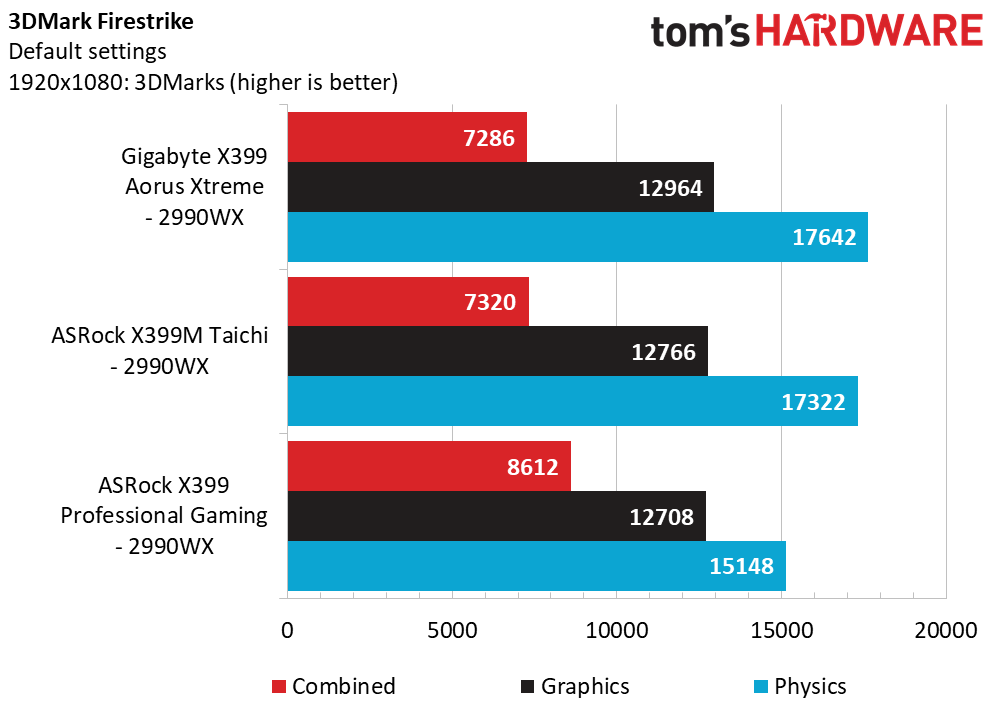

As for gaming synthetics, more cores unfortunately don’t translate to better performance. Skydiver and regular Firestrike show the X399 Aorus Xtreme doing well in Combined and Physics scores, respectively. Firestrike Extreme hits the Xtreme board hard, with sizable losses in Graphics and Physics while still it still performs well with the Combined metric. On a side note, the average Combined scores for Firestrike with the 2990WX are six percent below the 1950X data we previously discussed. You definitely don't want to opt for one of these high-core-count CPUs specifically for gaming.

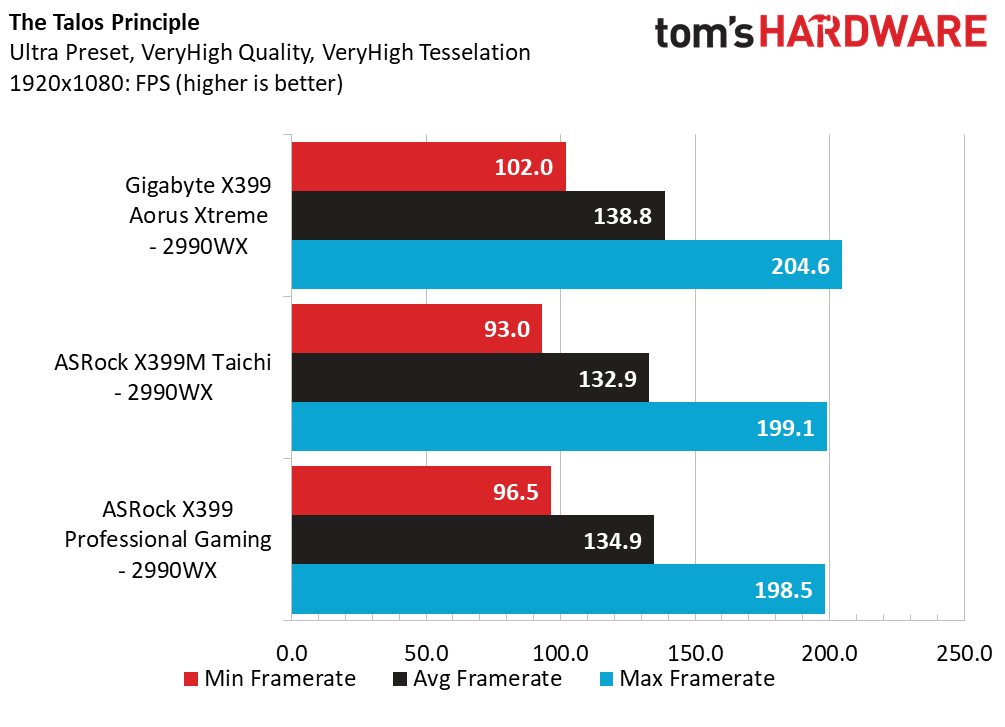

All three boards today perform pretty similarly to each other in games with instances where a few frames translate into larger percentage point deltas from the average. Starting with Talos, 2fps at the reported average frame rate separate 4K results at both detail settings, and at 1080p we see the X399 Aorus Xtreme lead the pack at both details presets.




Metro sees the opposite effect, where the X399 Aorus Xtreme lags by nearly 10fps at 1080p and high preset and bounces back to expected results at elevated details and resolutions. We clearly see GPU bottlenecking at 4k, where the 1950X was able to perform at similar framerates at the highest detail settings.


F1 2015 favors the frequencies of our 1950X, but for the 2990WX the Aorus Xtreme board suffers a 4fps loss at 1080p and wins the 4K average frame rates by a less-than-impressive 0.5fps.




Ashes also appears to favor speed instead of cores in our benchmarks, and the Aorus Xtreme serves up better performance at the higher detail settings at 1080p. However, 4K shows less than stellar Max Batch performance which drags down its percentage metrics in this workload.
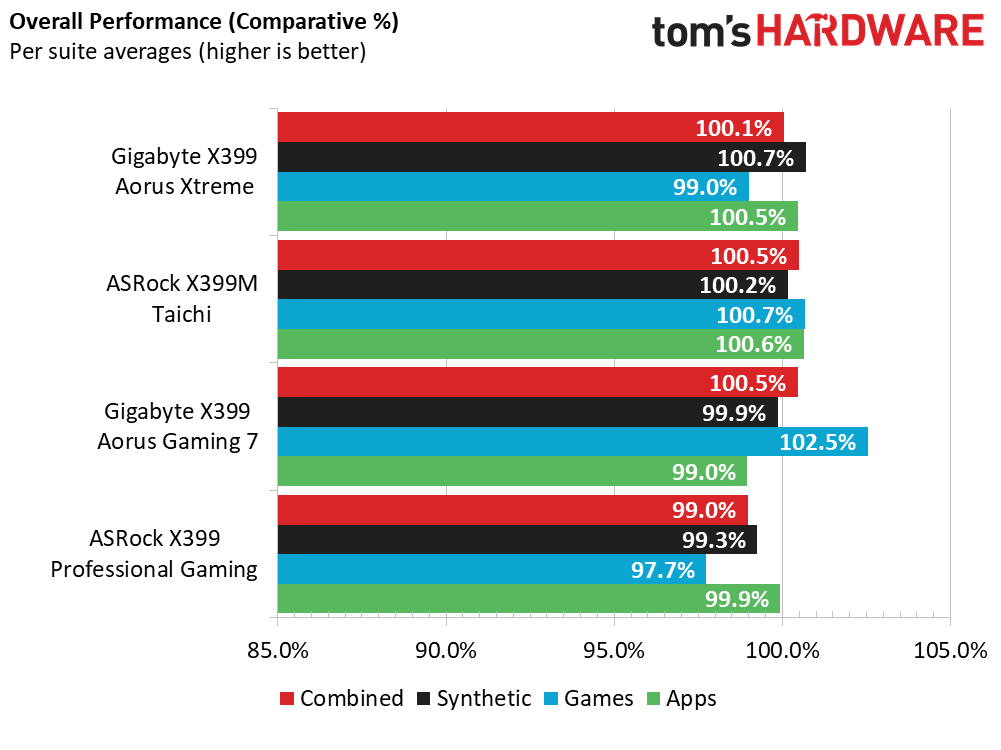

In short, this board works well out of the box with either the 1950X or 2990WX with nearly 100 percent performance reported in all metrics except gaming, when comparing the averages. From a raw performance perspective, gaming on the 1950X goes to the Gigabyte X399 Aorus 7 and the ASRock X399M Taichi makes a clean run, scoring above 100 percent performance on all metrics. However, loading in the more power-hungry processor shakes things up just enough to show the ASRock X399 Professional Gaming and Gigabyte X399 Aorus Xtreme taking wins in most cases, with the former favoring gaming and latter favoring applications respectively.
Power, Thermals & Efficiency With Both Processors


Both processors are binned differently from a TDP perspective, so drawing direct comparisons between the two can be difficult. However, with our ample sample size, it is easy to compare our samples against each other. With the 180W part, the Gigabyte X399 Aorus Xtreme draws roughly four percent more power on average than the ASRock X399M Taichi, and trails the other Gigabyte by 2.4 percent. With the 250W 2990WX, the Gigabyte manages to tighten the gap to three percent on average by drawing in 5-10 extra watts at each test condition. Regardless, the Aorus Xtreme does well for what its purpose is.

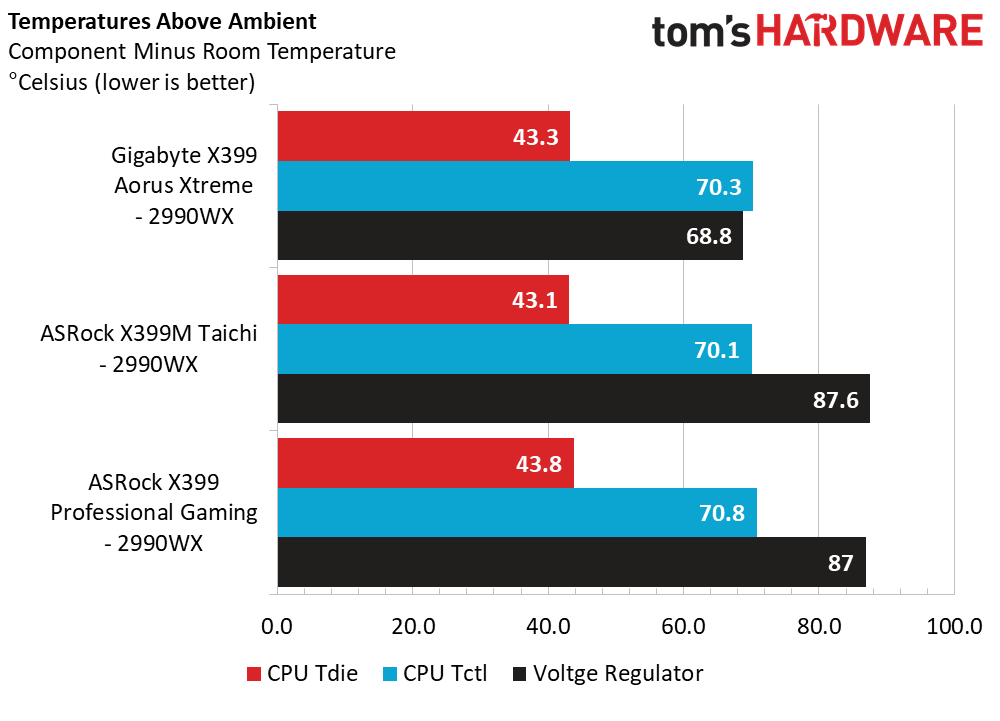
This is the paragraph that will set the Aorus Xtreme apart from the competition. Judging solely by the 1950X data, it would appear that the flagship Gigabyte board runs warmer in all regards, despite the beefy VReg cooler and this particular CPU cooling solution. However, the tables turn when we increase the load and engage the same workload. We see a remarkable 18.2C delta between the ASRock MOSFETs and the Aorus Xtreme, as reported by HWiNFO. If we factor in ambient temperatures, the ASRock boards are running nearly at the top of their safe temperature threshold at 110C! In comparison, Gigabyte’s solution provides us with almost 30C of thermal headroom on the MOSFET, providing an opportunity to overclock the processor without additional cooling or airflow improvements. This will pay off in in our overclocking and conclusion sections soon.


Onto efficiency. With stable power measurements and performance numbers all within a few percentage points, we can easily draw definitive conclusions this go-around. At lighter loads on the 1950X, the Gigabyte X399 Aorus Extreme suffers in efficiency due to the extra wattage pulled at all system load levels. As we populate more load-intensive CPUs (2000 series), this improves by 1.3 percent, but doesn’t beat the X399M or Professional Gaming boards. This is unfortunate for Gigabyte, but not a glaring defeat by any stretch.
MORE: Best Motherboards
MORE: How To Choose A Motherboard
MORE: All Motherboard Content
Current page: Benchmark, Power and Thermal Results
Prev Page UEFI and Test Configuration Next Page Overclocking, Value and Conclusion-
auraspeed Forgive my ignorance, as I'm more familiar with the current landscape of Intel Z390 VRM's, but doesn't a 10+3 phase seem extremely low for this level of wattage? Especially considering it's supposed to be an XOC board?Reply
Compared to the VRM's on Gigabyte's Z390 motherboard lineup, this motherboard's VRM would place it firmly at (or very close to) the bottom of the stack. -
rantoc About bloody-time 10GbE comes for real, heck 1GbE is overtaken by wireless (under good circumstances...) / usb. The 10GbE over copper tp (10GBASE-T) standard was done 2006... nice to see it come to consumers some 13 years later... *sigh*Reply -
TheTerk ehh, it's comparable to Asus' offering, and the MSI MEG appears to be a little over the top. With Asus, you get fewer phases but they're driven by a stronger MOSFET, and the MSI board uses more phases which are doubled. To your point, the Gigabyte is a doubled four phase, which _could_ be underserving larger processor, but our overclocking was not gated by power delivery.Reply
Would y'all like to see more board dissection/analysis? we can definitely do it and we try to take shots of the regulators when we can. -
hardarse7 I have this board. It is running my 1950x at 4.05ghz on all cores nice and stable. It peaks at 67degC at 1.2875v on Noctua's air cooler.Reply -
kirakishin hello HARDARSE7 ,Reply
i would like to know your setup please ?. iam looking for a motherboard + memory (16 or 32gb per module) for my 1950x.
thanks